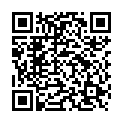|
|
|
| Module code: WIBb21-420 |
|
|
30VS (30 hours) |
|
5 |
| Semester: 4 |
| Mandatory course: yes |
Language of instruction:
German |
Assessment:
Exam
[updated 18.06.2025]
|
|
The total student study time for this course is 150 hours.
|
Recommended prerequisites (modules):
WIBb21-220
[updated 12.11.2025]
|
Recommended as prerequisite for:
WIBb21-550 Quality Management
WIBb21-730 Systems Engineering/ X in the Loop (HiL, SiL, MiL)
[updated 12.11.2025]
|
Module coordinator:
Studienleitung |
Lecturer:
Prof. Dr. Susan Pulham
Lehrbeauftragte der htw saar
Lehrbeauftragte
Professor/innen des Studiengangs
[updated 12.11.2025]
|
Learning outcomes:
After successfully completing this module, students will:
be able to prepare quantitative and qualitative data using descriptive statistical methods, and
interpret results
be able to recognize stochastic situations as such and analyze them using stochastic models
They will, in particular, be able to calculate probabilities, determine suitable distribution forms, and estimate distribution parameters
Students will be able to demonstrate a basic understanding of inductive statistics, in particular methods of parameter estimation and hypothesis testing
They will be able to select and carry out appropriate test procedures for empirical questions and interpret the results adequately.
[updated 18.06.2025]
|
Module content:
1. Descriptive statistics
1.1 Basic terms
1.2 One- and two-dimensional frequency distributions
1.3 Measures of location and measures of spread/dispersion
1.4 Calculating correlation and regression
1.5 Contingency calculation
2. Probability calculus
2.1 Basic terms: random experiment, events, probability
2.2 Modeling random experiments
2.3 Multi-stage random experiments
2.4 Conditional probability and independence
2.5 Random variables, expected value, variance
2.6 Calculation rules for expected values, variances, and covariances
2.7 Important distributions and limit theorems
3. Basic elements of inferential statistics
3.1 Problems with inferential statistics
3.2 Point and interval estimates
3.3 Hypothesis testing (parametric and non-parametric)
[updated 18.06.2025]
|
Teaching methods/Media:
Lecture, digitally supported teaching, self-study
[updated 18.06.2025]
|
Recommended or required reading:
Eckstein, Peter: Statistik für Wirtschaftswissenschaftler, 6. Auflage, Gabler, Wiesbaden, 2018
Eckstein, Peter: Klausurtraining Statistik, 4. Auflage, Gabler, Wiesbaden, 2005
Göllmann, Laurenz; Hübl, Reinhold; Pulham, Susan; Ritter, Stefan; Schon, Henning; Schüffler, Karlheinz; Voß, Ursula; Vossen, Georg: Mathematik für Ingenieure: Verstehen Rechnen Anwenden: Band 1: Vorkurs, Analysis in einer Variablen, Lineare Algebra, Statistik, Springer Vieweg Verlag, Wiesbaden, 2017
Pulham, Susan: Statistik leicht gemacht, Gabler, Wiesbaden, 2011
Sachs, Michael: Wahrscheinlichkeitsrechnung und Statistik für Ingenieurstudenten an Fachhochschulen; 5. Auflage, Carl Hanser Verlag, 2018
[updated 18.06.2025]
|

